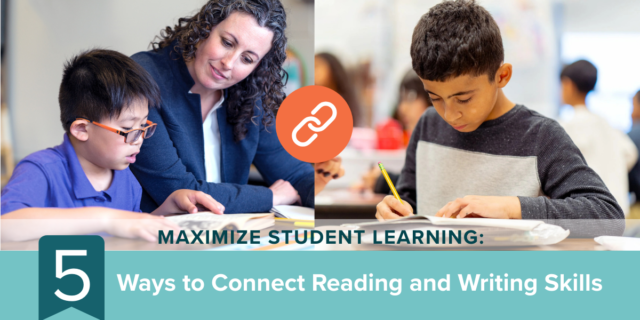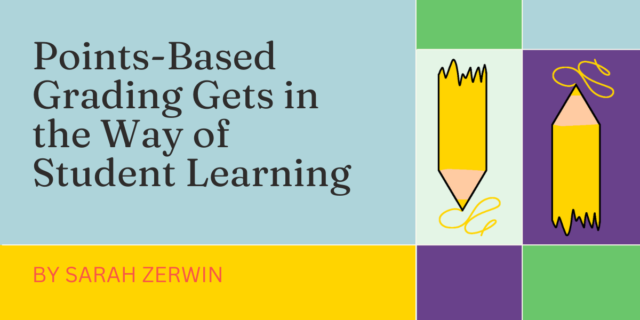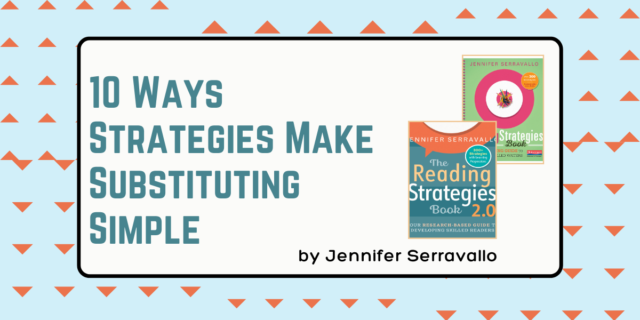
“Although elementary school educators have a variety of assessment tools …built upon short passages, it’s always been a leap of faith to think they tell us much about students’ comprehension of longer texts. For far too long, we’ve needed something more reliable.” – Richard Allington
With Complete Comprehension, Jennifer Serravallo has created a simple, powerful way to utilize authentic, full-length trade books in assessment. With an intuitive Assess→Evaluate→Teach framework, teachers can deeply understand each child’s comprehension and plan strategies-based instruction to support their progress.
Below, you’ll find Jen's answers to some of the most frequently asked questions about the Assessment phase of Complete Comprehension, excerpted from the Assess book included with the resource.
Q. When do I assess students?
It’s up to you. Complete Comprehension is designed to teach you about your readers so you can set goals and plan instruction. You might choose to assess readers prior to the start of a new unit, or on a rolling basis throughout the year as you need new information to help set individualized goals.
Q. How long will it take to administer the assessment?
The first time you introduce the assessment, it’ll take about five minutes to orient your class to what it is and what’s expected. Then students choose their book from the collection of 28 titles available, read independently, and answer questions on a Response Form as they go (stickers inside the books tell them to pause their reading to respond to a prompt). Depending on the length of the book they choose it may take students—not you—somewhere between one hour and several days to complete, and it fits in during your independent reading time. While some students in your class are reading the assessment books, you can continue conferences and small-group instruction with those who are not engaged in reading an assessment book.
Q. When might I use this assessment a second time with a student?
Once a student has completed the assessment and you’ve evaluated the responses, you’ll have a conference to establish a goal together. Through a mixture of whole-class, small-group, and individual lessons, you’ll coach the student as they work on the goal over time. Working toward a goal may last weeks or more than a month, depending on what the student is reading, how much time the student reads, and how much time the student devotes to accomplishing the goal. Once you notice through your regular conferring that the student seems to be using strategies tied to their goal with independence, it’s time to reassess to set a new goal.
Q. What if the student chooses a book that they have already read independently or heard read aloud?
If a student has already read the book independently, you’ll still get a lot of valuable information from the assessment. If it’s been used in instruction (for example, as a class shared text or read aloud) it would be a good idea to steer them to a different choice. Going forward, I recommend reserving the Complete Comprehension titles for assessment purposes only.
Q. What if a student starts reading the book only to tell me they don’t like it? Should I make the student finish it, or should I offer the student a new choice?
Allow the student to abandon the book and note the point at which they did so. The student’s point of frustration or boredom, and the responses they have given so far on the Response Form, may offer you insights into the kinds of books they like or the kinds of challenges they don’t enjoy as a reader.
My philosophy is that children should read books they find enjoyable and interesting that foster a high level of engagement. Since this assessment is meant to offer a window into what readers naturally do when they read independently, it’s best if they’re reading a book they like.
Q. How much help can I provide students when they're taking this assessment?
For this to be a valid assessment of what children can do independently, you need to refrain from offering too much assistance. On the other hand, you don’t want students to become frustrated or to hit a stumbling block that they’re unable to overcome. Explaining what a question is asking for, or defining question language is fine, but coaching students with specific strategies they might use to answer the questions more completely means that you are no longer seeing what they can do on their own.
Q. How complete do the responses need to be?
Don’t tell students to “write a lot.” Instead, tell them to write as much as they need to respond to the prompt completely. The writing spaces on the Response Form are compact, to encourage quick, but substantive, jotting. It’s important that the reader writes quickly and gets back to reading.
Q. Could responses be given orally instead of in writing?
Sure. However, the assessment is designed to allow the teacher to continue working with other students while one or some take an assessment. If the child wants to dictate responses into an app, use speech-to-text software on a laptop or tablet, or use a handheld digital recorder, that is fine. If someone is available to scribe the student’s responses, as long as no help with content or rewording of the child’s response is provided, that, too, is fine.
Q. Some of the students I work with are emergent bilinguals. What accommodations do you recommend?
Many bilingual education scholars and researchers have suggested that children be encouraged to use their strengths and their full linguistic repertoire during formative assessments. This means we will get the best information if students respond in whatever language(s) they feel most comfortable with. Teachers can then translate their responses before evaluating them.
Q. Can I use this assessment in place of running records?
Teachers across the country who piloted this assessment have remarked that they liked to replace running records with this assessment once children begin reading books at and around Level J, or that they use both running records and this assessment for Levels J and K, and then transition into only this assessment for Level L and beyond except in cases where the running record would provide helpful information (i.e. students who are still working on print and fluency skills). They found that a whole-book assessment offered a more complete picture of the reader than a short-passage assessment.
Q. Is this the only tool I should use to assess my students’ reading?
Reading comprehension is complicated and nuanced, and the more sources of information you have from which to glean teaching ideas, the better. Observe students during independent reading, monitor how the data you got from this assessment matches and/or departs from standardized test results, listen carefully to responses during lessons, and so on. Confer, conduct small groups, drop in on conversations, collect and read reading notebooks, and read what students write in the margins of their books and on sticky notes. Ongoing, continuous assessment and tweaking of your teaching are the best ways to meet the needs of each of your students.
…
To learn more about Complete Comprehension for Fiction or Nonfiction visit Heinemann.com
Jennifer Serravallo is the author of the New York Times bestseller The Reading Strategies Book and The Writing Strategies Book, which have been translated into Spanish, French, and Chinese. These and her other popular books and resources help teachers make goal-directed responsive strategy instruction, conferring, and small group work doable in every classroom. Her newest titles are Teaching Writing in Small Groups, A Teacher’s Guide to Reading Conferences, Understanding Texts and Readers, and the assessment and teaching resource Complete Comprehension for Fiction and Nonfiction.
Jen is a frequently invited speaker at national and regional conferences and travels throughout the US and Canada to provide full-day workshops and to work with teachers and students in classrooms. She is also an experienced online educator who regularly offers live webinar series and full-day online workshops, and is the creator of two self-paced asynchronous online courses, most recently Strategies in Action: Reading and Writing Methods and Content.
Jen began her career in education as an NYC public school teacher. Now as a consultant, she has spent the last fifteen+ years helping teachers across the country create literacy classrooms where students are joyfully engaged, and the instruction is meaningfully individualized to students' goals. Jen is also a member of Parents Magazine Board of Advisors for education and literacy.
Jen holds a BA from Vassar College and an MA from Teachers College, where she has also taught graduate and undergraduate classes.
Learn more about Jen and her work at Hein.pub/serravallo, on Twitter @jserravallo, on Instagram @jenniferserravallo, or by joining The Reading and Writing Strategies Facebook Community




